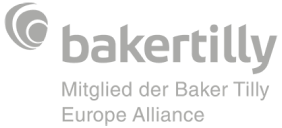News
Categories
Contact
1. September 2023
Reading Time: 7
Min.
news
ESRS S1 – Own workforce
The ESRS S1 is one of 4 social-specific standards of the European Sustainability Reporting Standards. This article is based on the final delegated regulation on the ESRS (European Sustainability Reporting Standards), which was published in the Official Journal of the EU on 22 December 2023. In case you are interested in getting a general overview of the standards, you are welcome to read them here. This article is based on the final delegated regulation on the ESRS (European Sustainability Reporting Standards), which was published in the Official Journal of the EU on 22 December 2023. Here you can find a general overview of the ESRS.
ESRS S1 specifies the disclosures to be made in connection with a company’s own workforce. The standard is intended to present the company’s main positive, negative, potential, and actual impacts, risks and opportunities in relation to its own workforce. In addition, the management of the impacts and measures to avoid, mitigate or reduce the impacts are to be disclosed. Furthermore, information on characteristics and different indicators related to the own workforce shall be provided.

9. March 2023
News
European Sustainability Reporting Standard 1: General requirements
On November 23, 2022, the European Financial Reporting Advisory Group (EFRAG) submitted the drafts for 12 sector-independent sustainability reporting standar...
ESG

16. March 2023
News
ESRS 2 – European Sustainability Reporting Standard 2: General disclosures
This article is based on the delegated regulation of the ESRS which was published in the Official Journal of the EU on 22nd December 2023. Here you can find ...
ESRS S1 disclosure requirements
The S1 standard includes 17 social-specific disclosure requirements (S1-1 to S1-17) as well as two requirements from ESRS 2 (ESRS 2 SBM-2, SBM-3), where SBM stands for Strategy and Business Model. The table below provides an overview of the disclosure requirements. The disclosure requirements are outlined in the following subsections.
| No. | Disclosure requirements | Description |
| 1 | Disclosure requirement related to ESRS 2 SBM-2 | Interests and views of stakeholders |
| 2 | Disclosure requirement related to ESRS 2 SBM-3 | Material impacts, risks and opportunities and their interaction with strategy and business model |
| 3 | S1-1 | Policies related to own workforce |
| 4 | S1-2 | Processes for engaging with own workers and workers’ representatives about impacts |
| 5 | S1-3 | Processes to remediate negative impacts and channels for own workers to raise concerns |
| 6 | S1-4 | Taking action on material impacts on own workforce, and approaches to managing material risks and pursuing material opportunities related to own workforce, and effectiveness of those actions |
| 7 | S1-5 | Targets related to managing material negative impacts, advancing positive impacts, and managing material risks and opportunities |
| 8 | S1-6 | Characteristics of the undertaking’s employees |
| 9 | S1-7 | Characteristics of non-employees in the undertaking’s own workforce |
| 10 | S1-8 | Collective bargaining coverage and social dialogue |
| 11 | S1-9 | Diversity metrics |
| 12 | S1-10 | Adequate wages |
| 13 | S1-11 | Social protection |
| 14 | S1-12 | Persons with disabilities |
| 15 | S1-13 | Training and skills development metrics |
| 16 | S1-14 | Health and safety metrics |
| 17 | S1-15 | Work-life balance metrics |
| 18 | S1-16 | Remuneration metrics (pay gap and total remuneration) |
| 19 | S1-17 | Incidents, complaints and severe human rights impacts |
1. Disclosure requirements ESRS 2 SBM-2 – Interests and views of stakeholders
The undertaking should disclose how the interests, views and rights of people in its own workforce, including respect for their human rights, influence the company’s strategy and business model.
2. Disclosure requirements ESRS 2 SBM-3 - Material impacts, risks and opportunities and their interaction with strategy and business model
Under this disclosure requirement, the undertaking should disclose whether and how actual and potential impacts on its own workforce arise as a result of the company’s strategy and business model and how these impacts contribute to adapting the strategy and business model.
Under this disclosure requirement, the undertaking should disclose whether and how actual and potential impacts on its own workforce arise as a result of the company’s strategy and business model and how these impacts contribute to adapting the strategy and business model.
3. Disclosure requirements S1-1 – Policies related to own workforce
The undertaking should report on its policies for managing the material impacts on its own workforce and the material risks and opportunities in this context. Among other things, it should disclose whether there are company policies aimed at eliminating discrimination, including harassment, and policies regarding the promotion of equal opportunities.
4. Disclosure requirements S1-2 – Processes for engaging with own workers and workers’ representatives about impacts
As part of this disclosure requirement, the undertaking should describe the general processes for engaging its own workforce and its representatives with respect to actual and potential material impacts on its own workforce. Among other things, it should disclose whether the exchange takes place directly with the workforce or with representatives of the workforce, as well as the type and frequency of the exchange.
Subscribe to TPA Newsletter
Our experts will inform you about all important tax changes!
5. Disclosure requirements S1-3 – Processes to remediate negative impacts and channels for own workers to raise concerns
The company should describe the processes in place to address any negative impacts on the workforce that the company has caused or contributed to. Furthermore, the options available for the workforce to raise concerns must be outlined and among other things, the specific mechanisms and processes in this regard should be disclosed.
6. Disclosure requirements S1-4 – Taking action on material impacts on own workforce, and approaches to managing material risks and pursuing material opportunities related to own workforce, and effectiveness of those actions
In the course of this disclosure requirement, it should be communicated which measures and initiatives the company is taking to mitigate and eliminate significant negative impacts on its own workforce. In addition, measures to achieve significant positive impacts related to the company’s own workforce should be presented. The undertaking should also describe, among other things, how the impacts are managed and what resources are available for this purpose.
7. Disclosure requirements S1-5 – Targets related to managing material negative impacts, advancing positive impacts, and managing material risks and opportunities
Within the scope of this disclosure requirement, the company should explain the time-bound and outcome-oriented targets, with regard to the following topics:
- the reduction of negative impacts on its own workforce
- advancing positive impacts on its own workforce
- managing material risks and opportunities related to its own workforce.
In addition, for example, the process for setting targets and the involvement of the company’s own workforce in this context should be disclosed.
8. Disclosure requirements S1-6 – Characteristics of the undertaking’s employees
The main characteristics of the workforce should be described in regards to this disclosure requirement. In the course of this, the total number of employees, by gender and by country, the full-time equivalent as well as the rate of employee turnover during the reporting period should be disclosed.
9. Disclosure requirements S1-7 – Characteristics of non-employee workers in the undertaking’s own workforce
In this disclosure requirement, the company describes the key characteristics of the non-employee workers in the own workforce. This includes the total number of non-employee workers and the type of work they perform.
10. Disclosure requirements S1-8 – Collective bargaining coverage and social dialogue
The undertaking shall disclose information on the extent to which the working and employment conditions of its own workforce are determined or influenced by collective bargaining agreements and the extent to which the workforce in the European Economic Area (EEA) is involved in social dialogue at company and European level. For example, the percentage of the total workforce covered by collective agreements should be disclosed.
11. Disclosure requirements S1-9 – Diversity metrics
This disclosure requirement includes the number and percentage of the gender distribution in the top management level and the age distribution (under 30 years, 30-50 years, over 50 years) of the company’s own workforce.
12. Disclosure requirements S1-10 – Adequate wages
The company must disclose whether all employees of its own workforce receive adequate wages, which are based on corresponding benchmarks. If employees do not receive appropriate compensation, this must be disclosed.
13. Disclosure requirements S1-11 – Social protection
As part of this disclosure requirement, the company should state whether its own employees are protected against loss of income due to serious life events. These life events include, among others, illness, maternity leave and accidents at work. If the employees are covered within this scope, no further information is required.
14. Disclosure requirements S1-12 – Persons with disabilities
As part of this disclosure requirement, the company shall disclose, the percentage of persons with disabilities in its own workforce, optionally broken down by gender.
15. Disclosure requirements S1-13 – Training and skills development metrics
In this disclosure requirement, the company shall indicate the extent to which training is provided to the workforce. The company shall disclose, among other things, the percentage of the workforce that has participated in regular performance evaluations and the average number of hours of training per employee. This information shall be broken down by categories of employees and gender.
16. Disclosure requirements S1-14 – Health and safety metrics
The disclosure requirement includes the reporting of information on the extent to which employees are covered by the company’s occupational health and safety management system, as well as the number of incidents related to work-related injuries, illnesses and fatalities. In addition, the company shall disclose the number of fatalities resulting from work-related injuries and work-related illnesses of other employees working on the company’s premises.
17. Disclosure requirements S1-15 – Work-life balance metrics
The company shall disclose the extent to which employees have the right to family-related leave and use this possibility. If due to social policy and/or collective agreements all employees have a family-related right to absence, it is sufficient for this disclosure requirement to state this.
18. Disclosure requirements S1-16 – Remuneration metrics (pay gap and total remuneration)
As part of this disclosure requirement, the percentage pay gap between women and men and the ratio between the remuneration of the highest paid person and the median remuneration of the employees should be disclosed by the company.
19. Disclosure requirements S1-17 – Incidents, complaints and severe human rights impacts
The disclosure requirement covers, among other things, the disclosure of the number of work-related incidents and/or complaints and severe human rights impacts and incidents within the company’s own workforce, as well as any related significant fines or sanctions for the reporting period.









